Smoke Studies: The BBOP Beat Quickens
Published: 21 July 2021
Peer-reviewed papers are piling up from a 2013 ARM airborne campaign on wildfires and controlled burns
Editor’s note: This article is part of a series exploring ARM field campaigns and data on biomass burning events.
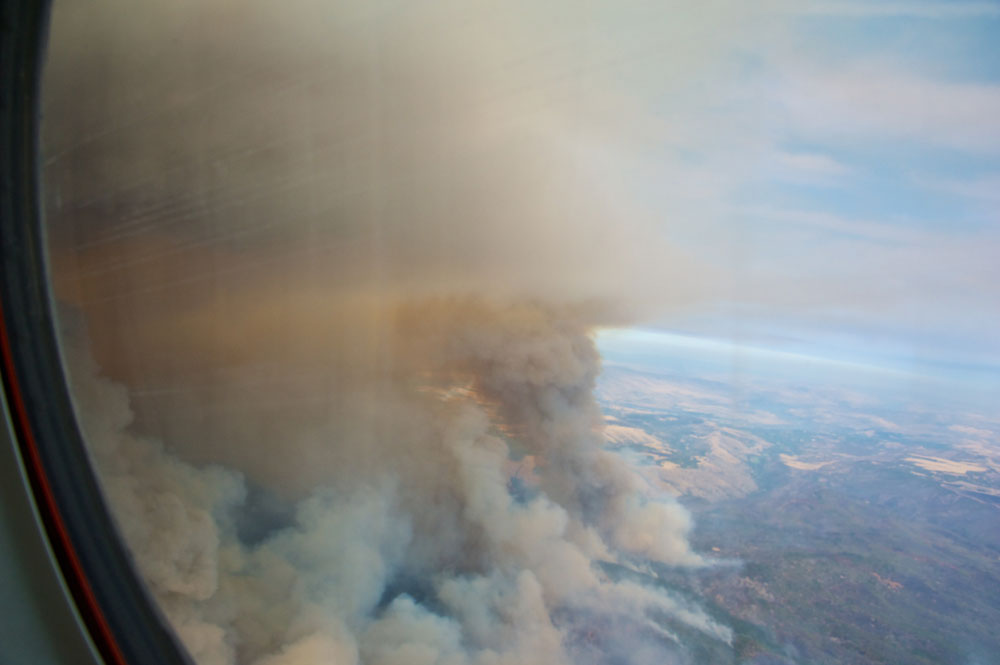
Wildfires and other biomass burning events contribute about 60% of carbon-containing particles in the atmosphere. The aerosols from such blazes directly influence the Earth’s energy balance by absorbing sunlight (a heating effect) and by scattering sunlight upward (a cooling effect). Biomass burning aerosols also exert indirect effects by influencing cloud formation and precipitation.
The biggest fire-related U.S. Department of Energy (DOE) study since 2000 has been the Biomass Burning Observation Project (BBOP). Larry Kleinman and Art Sedlacek, atmospheric chemists at Brookhaven National Laboratory in New York, led the 2013 field campaign.
DOE’s Atmospheric Radiation Measurement (ARM) user facility conducted BBOP, with much of the funding for data analysis coming from DOE’s Atmospheric System Research (ASR) program.
Studies like BBOP are more relevant than ever. Worldwide, wildfires are increasingly frequent and intense. They are linked to warming temperatures that dry out vegetation and alter patterns of rainfall and snow. Particles from such fires (and from controlled agricultural burns) also affect human health.
While wildfires are a concern, Sedlacek has written, they are an important part of the natural ecosystem. Such fires remove dead vegetation, contribute soil nutrients, and thin tree canopies for sunlight to prompt seed germination.
Almost eight years after BBOP wrapped up, the number of related publications―about 30 so far―is increasing fast. In the last two years alone, at least 10 have appeared.
Sedlacek calls the flurry of papers “an indication that the research subject matter is of great interest and still very timely.”
Before BBOP
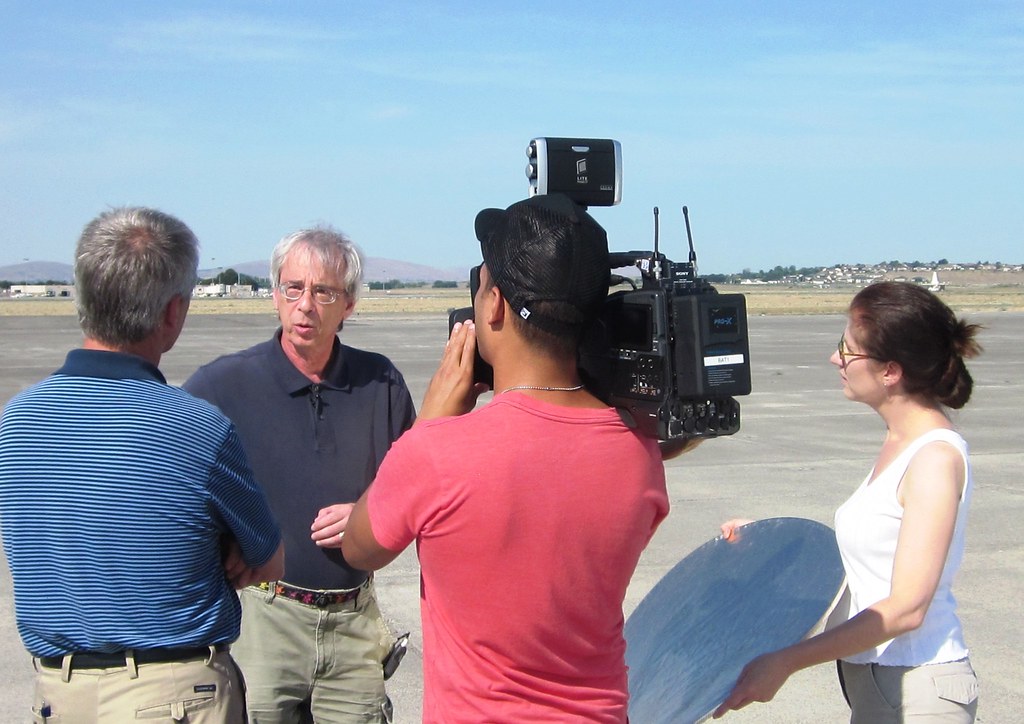
Within DOE and elsewhere, interest in wildfires and the climate-influencing smoke they create was great even before BBOP.
Well before, says Sedlacek, “we were probing black carbon from wildfires.”
Black carbon forms combustion-related atmospheric particles. Sometimes called soot, black carbon is second only to carbon dioxide as a warming agent. A lot of uncertainty remains about how black carbon evolves in the first few hours and miles downwind of a wildfire.
In the first half of 1998, epic, long-lived wildfires in Mexico and Central America cast a pall of smoke far north over ARM’s Southern Great Plains (SGP) atmospheric observatory, which spans parts of Oklahoma and Kansas. Smoke from these fires inspired a 2000 paper on its aerosol loading and vertical distribution, captured by the SGP’s unique array of instruments.
The study helped inspire other DOE investigations of biomass burning.
For one, DOE took part in a 2006 field campaign in Mexico called Megacity Initiative: Local and Global Research Observations (MILAGRO). Biomass burning was a subject of attention.
In March 2012, Sedlacek led a study, co-authored by Kleinman and others, that investigated the microphysical properties of black carbon aerosols linked to Canadian wildfires. Instruments at an observation site near Brookhaven Lab on Long Island, New York, provided data for studying the morphology of particles containing black carbon.
BBOP Design
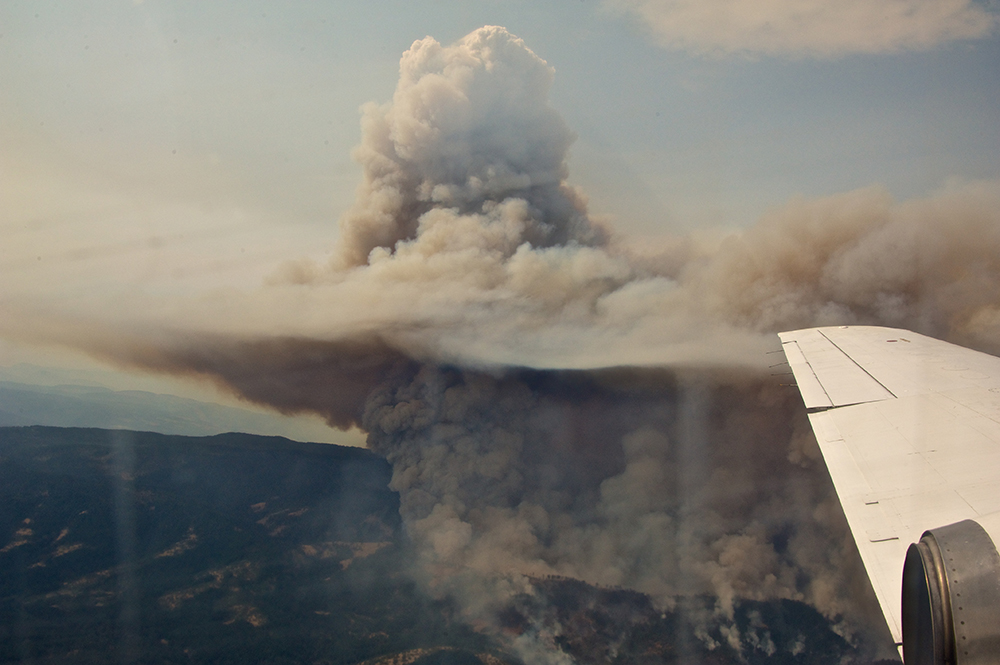
What made the 2013 BBOP campaign unique was that it went to the source of wildfires, into the plumes themselves. The field campaign was a search for near-fire smoke aerosols and how they changed downwind. In these circumstances, aerosol properties change rapidly.
Kleinman and Sedlacek assembled a multi-institutional BBOP research team, including scientists from other DOE national laboratories, universities, and industry partners.
In designing the campaign, they saw the need to measure smoke plumes close to large wildfires, including the near-source time evolution of aerosols. In their 2016 final campaign report, they noted that there had been few wildfire studies in the United States, where millions of acres go up in smoke every year.
BBOP meant confronting—and capturing—several realities about wildfires. Most are dense, complex, and unpredictable. They have varying lifetimes. And wildfires contain a dynamic mix of combustion phases that both flame up and smolder.
At the heart of BBOP’s data strategy was ARM’s now-retired Gulfstream-159 (G-1) research aircraft. Its instruments collected data on chemical, optical, microphysical, and radiative properties of emissions from wildfires and controlled agricultural burns.
There were two fieldwork periods in 2013.
In the summer, the G-1 flew transects over wildfire plumes in Washington state, Oregon, and Idaho. The aircraft was equipped with an array of sensors that tracked single sets of wind-shifted particles. Scientists on the G-1 adjusted instruments in real time.
In the fall, the target fires were controlled agricultural burns in the Lower Mississippi Valley. Taking off from a base in Tennessee, the G-1 flew patterns through controlled-burn plumes in Arkansas, where corn and soybean waste and rice straw are burned after harvest.
A Plume of Papers
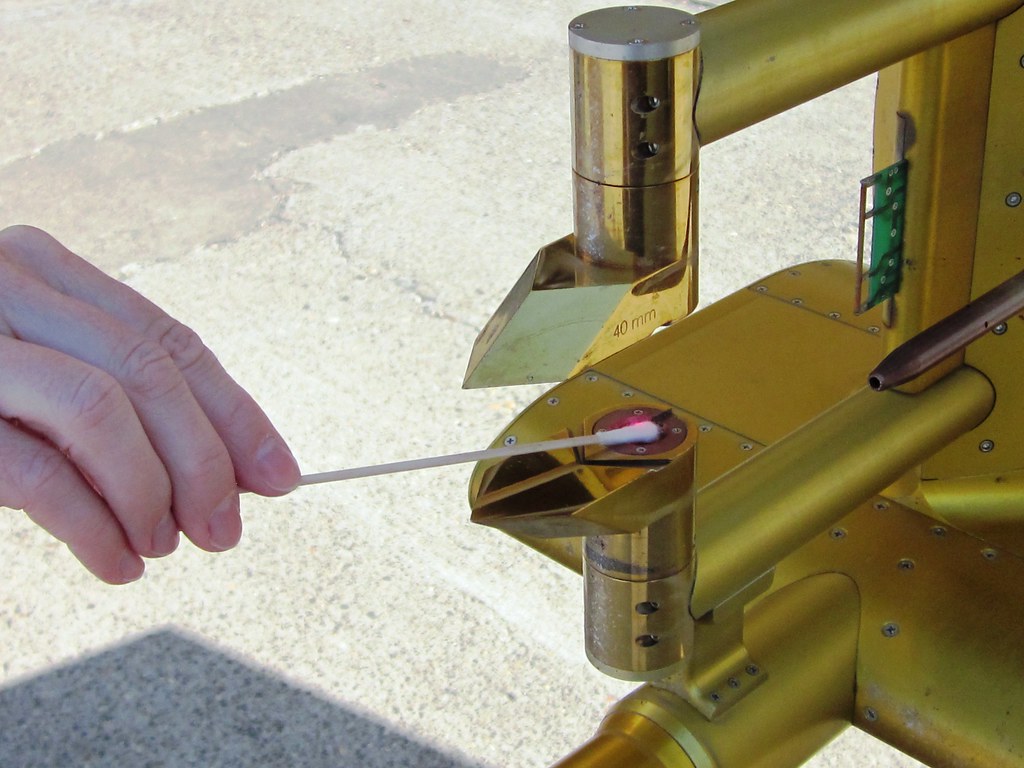
Since 2013, BBOP “has slowly but steadily produced substantive papers,” says Sedlacek, “with more under review and in the pipeline.”
So far, the highest-cited BBOP peer-reviewed papers include an investigation of the air-quality implications of wildfires versus prescribed burns; a study of the regional influence of wildfires on aerosol chemistry in the Western United States; and a summary of insights from BBOP.
In 2019, Sedlacek, Kleinman, Timothy B. Onasch of Aerodyne Research Inc., and other BBOP veterans wrote a breakthrough study of spherical tarball particles, which appeared in the Proceedings of the National Academy of Sciences (PNAS). The paper has helped dispel some uncertainties about the chemistry involved in tarball formation.
Tarballs are a type of brown carbonaceous particle unique to biomass burning. They make up as much as 30% of the aerosol mass from wildfires and other biomass burning events.
Black carbon (soot) is common in the atmosphere in the form of fine particles. So-called “brown carbon,” light-absorbing particles of organic matter in the atmosphere, are distinct from soot and include tarry materials from combustion.
As with other BBOP-related publications, the PNAS paper and the tarball studies that preceded it bring science a long way closer to understanding how particles change after a fire.
Downwind Radiative Effects
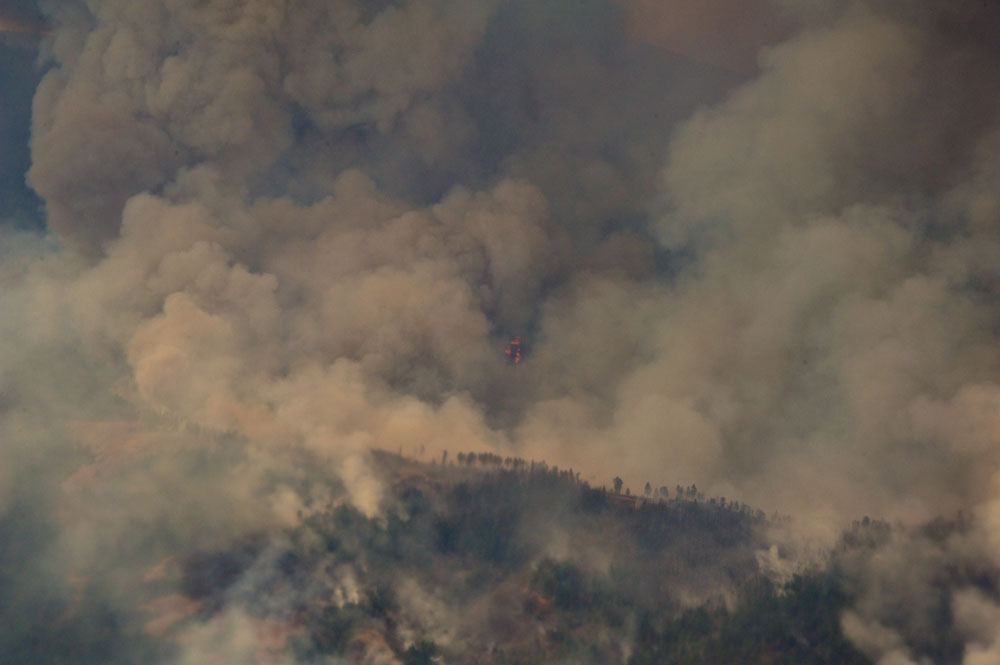
A November 2020 BBOP paper led by Kleinman explored one of the main questions posed during the campaign: How do aerosol particles and their crucial optical properties rapidly evolve downwind of wildfires?
Kleinman and the other researchers, including Sedlacek and Robert Yokelson of the University of Montana, tracked the evolution of smoke plumes from near the site of the fire to locations 2 to 3.5 hours downwind. They used data from five wildfires over nine research flights during the Pacific Northwest phase of BBOP.
Measurements from flight transects showed that organic substances made up more than 90% of the aerosol mass.
Importantly, the Kleinman et al. paper demonstrated that particle sizes increased with downwind distance, making the particles significantly more efficient at scattering light. (In one flight, that efficiency doubled.)
The authors speculated that the direct radiative effect of a smoke plume would be near zero during a wildfire―but would increasingly have a cooling effect downwind.
Beginnings, Edges, and Cores
“The campaign (principal investigators) and instrument mentors were engaged, easy to work with, and were clearly happy to have their data used again.”
Anna Lily Hodshire, lead author of a May 2021 paper using BBOP data
A recent BBOP-related publication illustrates the continuing utility of the campaign’s data.
A May 2021 paper led by Colorado-based atmospheric scientist Anna Lily Hodshire investigates the impact of downwind dilution on the chemical changes that occur in wildfire smoke. (Kleinman and Sedlacek were among her co-authors.) The work emerged from Hodshire’s PhD studies at Colorado State University under the direction of co-author Jeffrey Pierce.
The study is one of the first to separate wildfire smoke into plume edges and smoke cores, says Hodshire, now a scientist at Handix Scientific in Boulder, Colorado. That inner-and-outer division reveals new insights into how smoke-related aerosols age (evolve) downwind of a fire.
The edges of the smoke plume mix faster with background air. The plume edges are quickly diluted, get more transparent, and speed up aerosol-altering photochemistry.
Hodshire’s breakthrough work was eased by BBOP instrumentation and campaign strategies, which “are still state-of-the-art today,” she says. “The campaign (principal investigators) and instrument mentors were engaged, easy to work with, and were clearly happy to have their data used again.”
Going Wider

Meanwhile, thinking has evolved about studies like BBOP that focus on the near-source evolution of biomass burning aerosols, including brown carbon. In his latest paper, submitted for publication, Sedlacek says that such studies fall short because they “really do not tell us much about how these particles age on a regional or global scale.”
The paper addresses this BBOP limitation by proposing that the evolution of biomass burning aerosols can be broken into three aging regimes:
- local (tens of kilometers and up to two hours away from a fire source)
- regional (up to continental scales and two days away)
- global (from 1,000 kilometers to a global scale, over several days to a week or more).
BBOP contributed data useful in illuminating smoke-aerosol evolution in the local regime. A 2016–2017 ARM ground-based campaign called Layered Atlantic Smoke Interactions with Clouds (LASIC) and a NASA airborne investigation called ObseRvations of Aerosols above CLouds and their intEractionS (ORACLES) provided data from the regional and global regimes.
LASIC and ORACLES took place in the southeastern Atlantic, where one of the world’s three subtropical stratocumulus cloud decks critically influences global and regional climate. In turn, that cloud deck is influenced by biomass burning events in southern Africa, a region that produces about one-third of the world’s fire-related aerosols.
“Combining these three field campaigns gives us an unprecedented view of the black carbon life cycle and provides insights into the life cycle of a wider range of biomass burn aerosols,” says Sedlacek.
ARM’s BBOP-Adjacent Studies
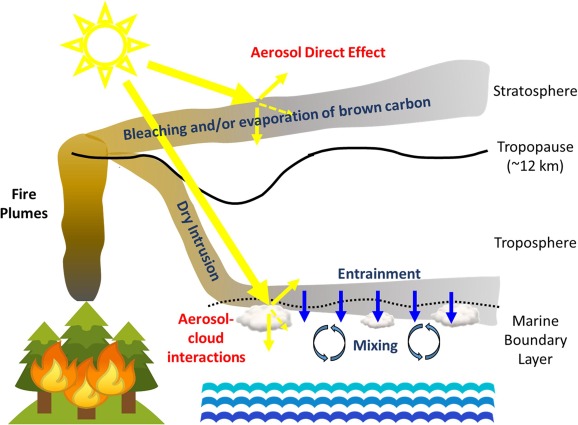
Since BBOP ended in October 2013, LASIC and many other studies have underscored ARM and ASR interest in fire impacts. This is a sign, says Sedlacek, that BBOP “was certainly ahead of its time in understanding the importance of wildfires.”
The Green Ocean Amazon (GoAmazon2014/15) field campaign, for instance, frequently attracts wildfire- and smoke-related investigations by BBOP veterans and BBOP-inspired researchers.
GoAmazon2014/15 collected measurements from pristine sections of the Amazon rainforest and Manaus, an industrial city in Brazil that creates a regular plume of pollution.
One study, published in 2019, used dry-season GoAmazon data to see how biomass burning, urban aerosols, and forest vegetation influenced the light-absorbing properties of particulate matter. Sedlacek was a co-author.
Other post-BBOP publications have used ARM data to study fire impacts.
A 2014 study in Scientific Reports investigated unusually large aggregates of soot from wildfires in India, Mexico, New Mexico, and California. Some of the data came from ARM’s 2010 Carbonaceous Aerosol and Radiative Effects Study (CARES).
A 2018 paper reported on the contribution of aerosols and trace gases from regional wildfires and local oil-extraction activity to summertime air quality in the North Slope of Alaska. The study used G-1 data from the 2015 ARM Airborne Carbon Measurements V (ARM-ACME V) field campaign, in which Sedlacek participated.
In a 2020 paper, researchers combined ARM SGP and NASA data sets to quantify the impacts of North American fire activity on continental boundary-layer clouds, their aerosols, and cloud condensation nuclei—particles that form cloud drops.
Another 2020 paper examined long-lived aerosols from Canadian wildfires that descended into marine boundary-layer clouds above the Azores in the northeastern Atlantic Ocean. The study, one of the few field-observation studies of such long-range transport activity, partly relied on measurements from ARM’s Eastern North Atlantic atmospheric observatory.
In all, as one important inspiration for such work, “BBOP is still very much relevant,” says Sedlacek.
Beyond BBOP

Biomass burning appears likely to remain a hot topic whether BBOP data are involved or not.
Wildfires and related aerosols brought heat to the June 2021 Joint ARM User Facility/ASR Principal Investigators Meeting, with 12 poster abstracts related to biomass burning. (Such posters are a good measure of how much a given topic attracts current interest.)
In addition, the meeting featured a breakout session on an upcoming ARM field campaign that will focus on low marine clouds at the California edge of the Pacific Ocean. There was talk that the 2023–2024 Eastern Pacific Cloud Aerosol Precipitation Experiment (EPCAPE) near San Diego may include data from periodic biomass burning events.
Fire influences also came up during the joint meeting in discussions of another upcoming campaign, the Surface Atmosphere Integrated Field Laboratory (SAIL). The all-season, multiyear investigation of mountain hydrology in central Colorado is slated to run from September 2021 through June 2023. Given the prevalence of wildfires in Colorado during the past few summers, it is likely that SAIL will sample some biomass burning events.
Among aerosol researchers, it seems, where there is smoke, there is a wildfire of interest.
Browse BBOP data in the ARM Data Center.
Also in the biomass burning series: Read about the LASIC campaign.
Coming up: an overview of instrument development, modeling methods, and laboratory experiments inspired by BBOP
Keep up with the Atmospheric Observer
Updates on ARM news, events, and opportunities delivered to your inbox
ARM User Profile
ARM welcomes users from all institutions and nations. A free ARM user account is needed to access ARM data.


















